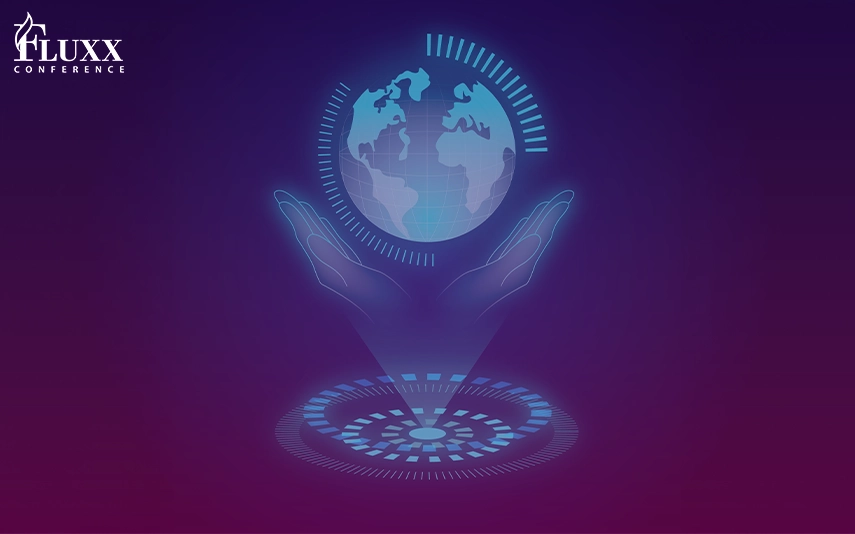
Hologram Technology is Shaping the Future of Global Healthcare
Summary: Virtual health is redefining the interaction of the patient with holographic consultation and distance diagnostics. With the convergence of medical innovation and digital intelligence, the limits to access and care are re-established. Having evolved into AI-generated holograms and innovative clinical ecosystems, this change is already making it to the top of the agenda of the biggest healthcare conferences, the top business conferences, and education technology conference sessions around the globe.
Physical spaces are no longer entirely relied on for healthcare. Clinicians can now communicate with patients, students, and even colleagues who are continents away with holographic and mixed-reality technology. This change is not an experiment- it is becoming a foundation of 21st-century medical practice.
The virtual presence is a solution that relies on high-definition holographic images, real-time data synchronization, and AI-based diagnostics to address the distance between the patient and the professional. The hologram doctor is no longer a part of science fiction; it is at the border of clinical reality.
How Holograms are Transforming the Patient Experience?
1. Real Consultations, Real Time
It would be possible to stand in a hospital in Tokyo and see a specialist in New York next to you in the complete holographic form. The engagement is personal, reactive, and direct.
2. Expanding Access to Expertise
Geographical limitations are eliminated by holographic consultations. A patient in a remote location can also get the assessment of a specialist without traveling hundreds of miles to do so.
3. Enhancing Emotional Connection
Virtual presence records body language and eye contact, which are typically absent in conventional video calls. It brings digital care back to its senses.
Behind the Technology: The Science Powering the Vision
The smooth Holographic healthcare depends on a number of combined technologies:
The integration of these technologies is increasing the uptake of the technology in hospitals, universities, and research laboratories.
Clinical Application: Where the Future Meets Function
Holographic healthcare is not only in consultation and education. It is being used to revolutionize surgery, emergency care, and hospital management.
Surgical Planning
Holography patient information is superimposed on the body by the surgeons during operations. It offers real-time guidance, increasing the accuracy of complex procedures.
Remote Collaboration
Experts can also participate in foreign cross-border teams working in the operating rooms remotely. When traveling was not possible in times of restrictions due to the pandemic, this ability allowed holding critical expertise.
Rehabilitation and Therapy
Holographic simulations are now used by physiotherapists to direct patients undergoing exercises to provide motivation and proper postural feedback.
Challenges on the Path to Mainstream Adoption
Any innovation experiences pre-scale barriers. In the case of holographic medicine, the issues of cost, privacy, and data integrity should be listed as the primary ones.
In spite of these challenges, the technology is maturing rapidly. Pilot programs across Europe, Asia, and North America report better patient satisfaction and clinical outcomes.
Conclusion
The holographic revolution in healthcare illustrates how innovation can empower empathy, efficiency, and equity. The movement does not exist solely in research laboratories; it resonates strongly across the biggest healthcare conferences worldwide, where thought leaders present these groundbreakers.
At the intersection of digital transformation and human-centered care, such dialogues continue within top business conferences and education technology conference events. Together, they reaffirm one idea: the future of medicine is not just digital, it is deeply personal.
Join the Fluxx Conference to connect with visionaries and spark new ideas, and keep the momentum going with Fluxx News, your daily source of innovation and insight.
FAQs
1. What is the difference between holographic healthcare and telemedicine?
Holographic healthcare makes the consultations life-size, interactive, and, thus, more immersive and emotionally engaging than a regular video call.
2. Is a holographic consultation safe for patient data?
Yes, Trusted systems adhere to international healthcare data laws and encryption protocols, as well as adhere to stringent consent requirements to provide patient safety.
3. What type of equipment do hospitals require to have holographic setups?
The hospitals need high-speed connections, mixed reality projectors, safe cloud storage, and compatible AI-enhanced visualization software.
4. Are holograms useful in medical education?
Absolutely, Learners are able to visualize and handle 3D models, and complicated anatomy and surgical education become more engaging and compelling.
5. What is the most significant obstacle to holographic healthcare implementation in the world?
The major obstacles are cost and infrastructure, although with the accessibility of technology and its proliferation, the rate of adoption will grow.
Interesting Reads:
30-Minute Pre-Conference Prep to Get the Most from Any Innovation Event
Top 9 Unexpected Lessons at International Business Conferences




